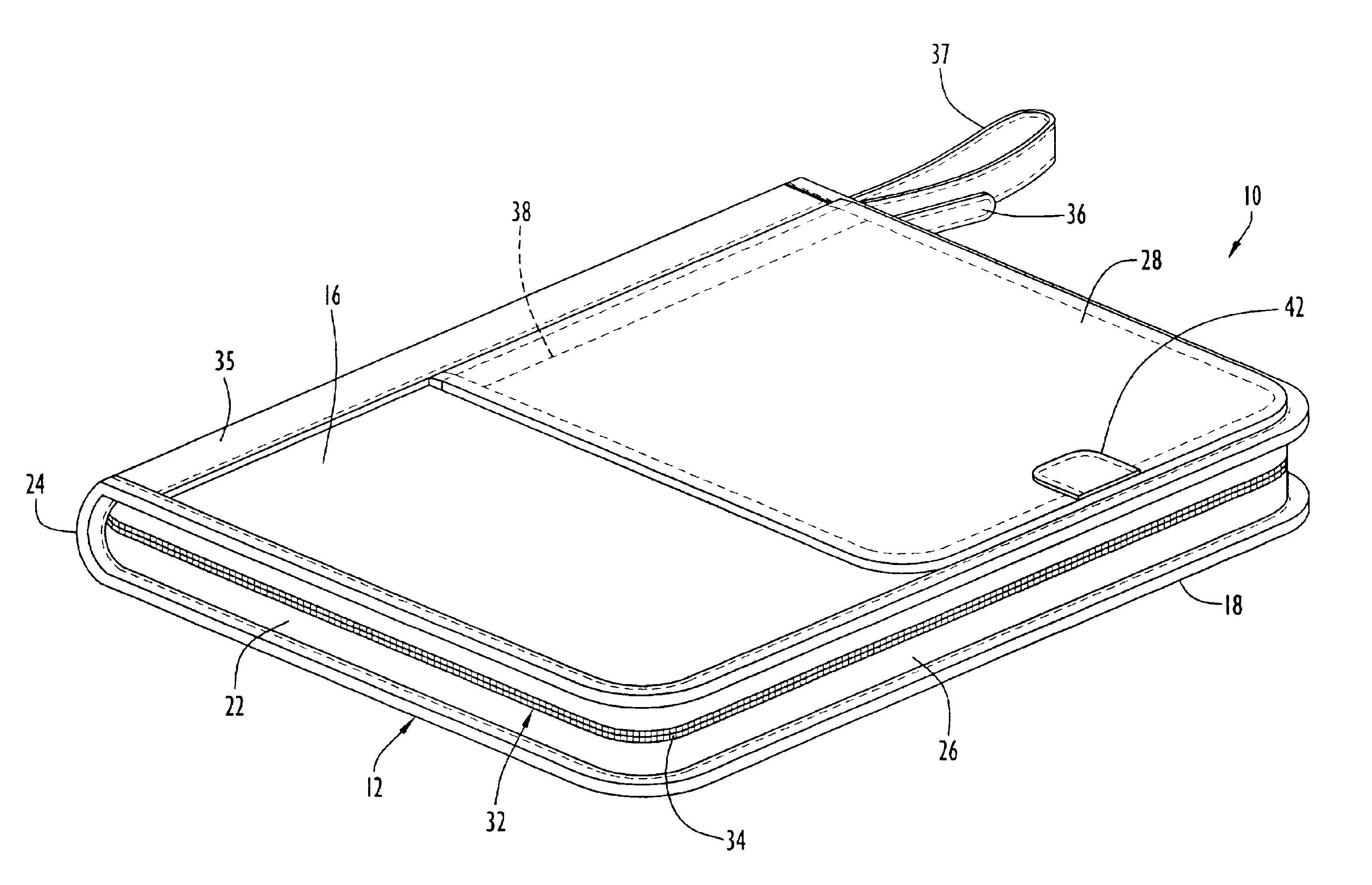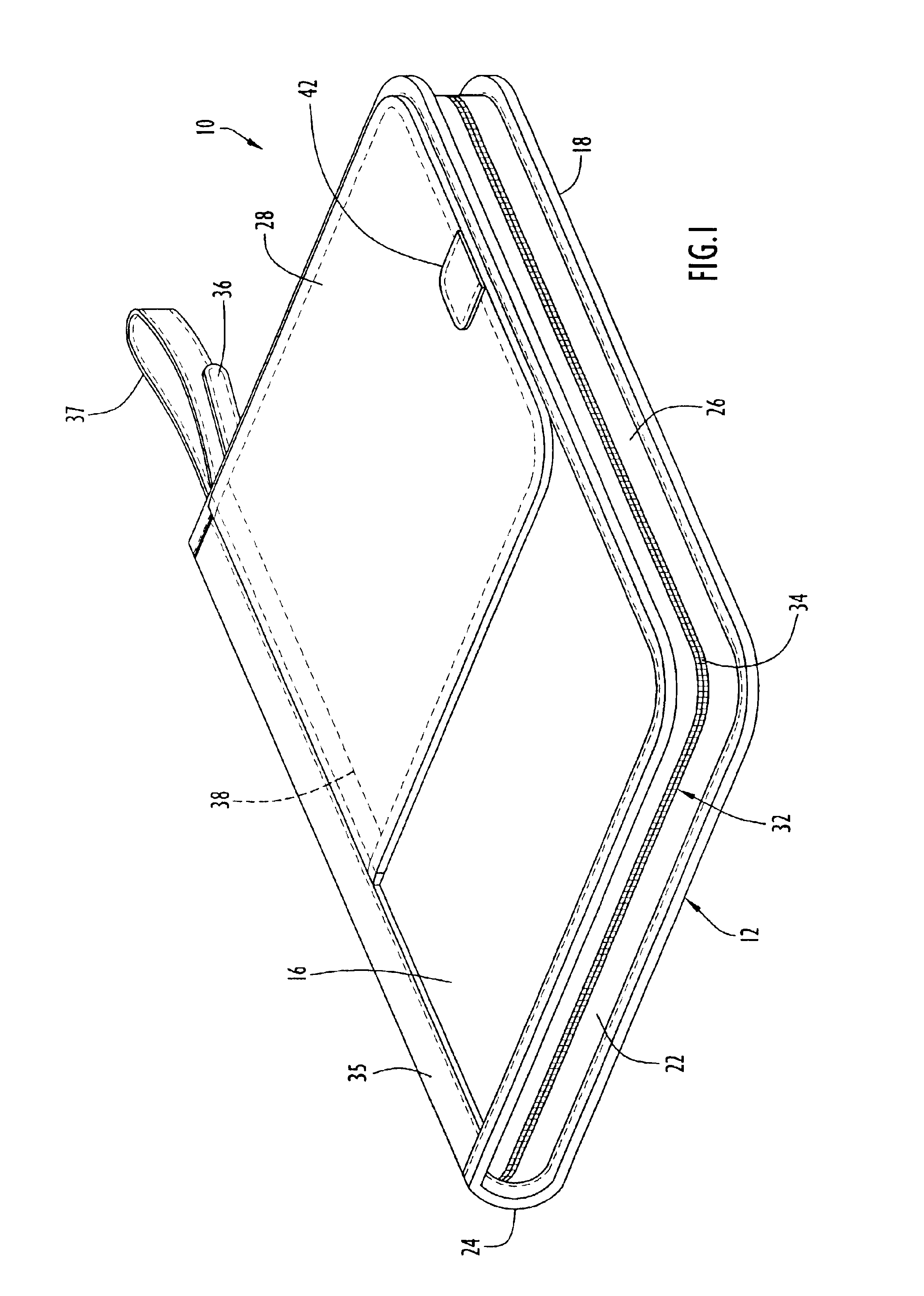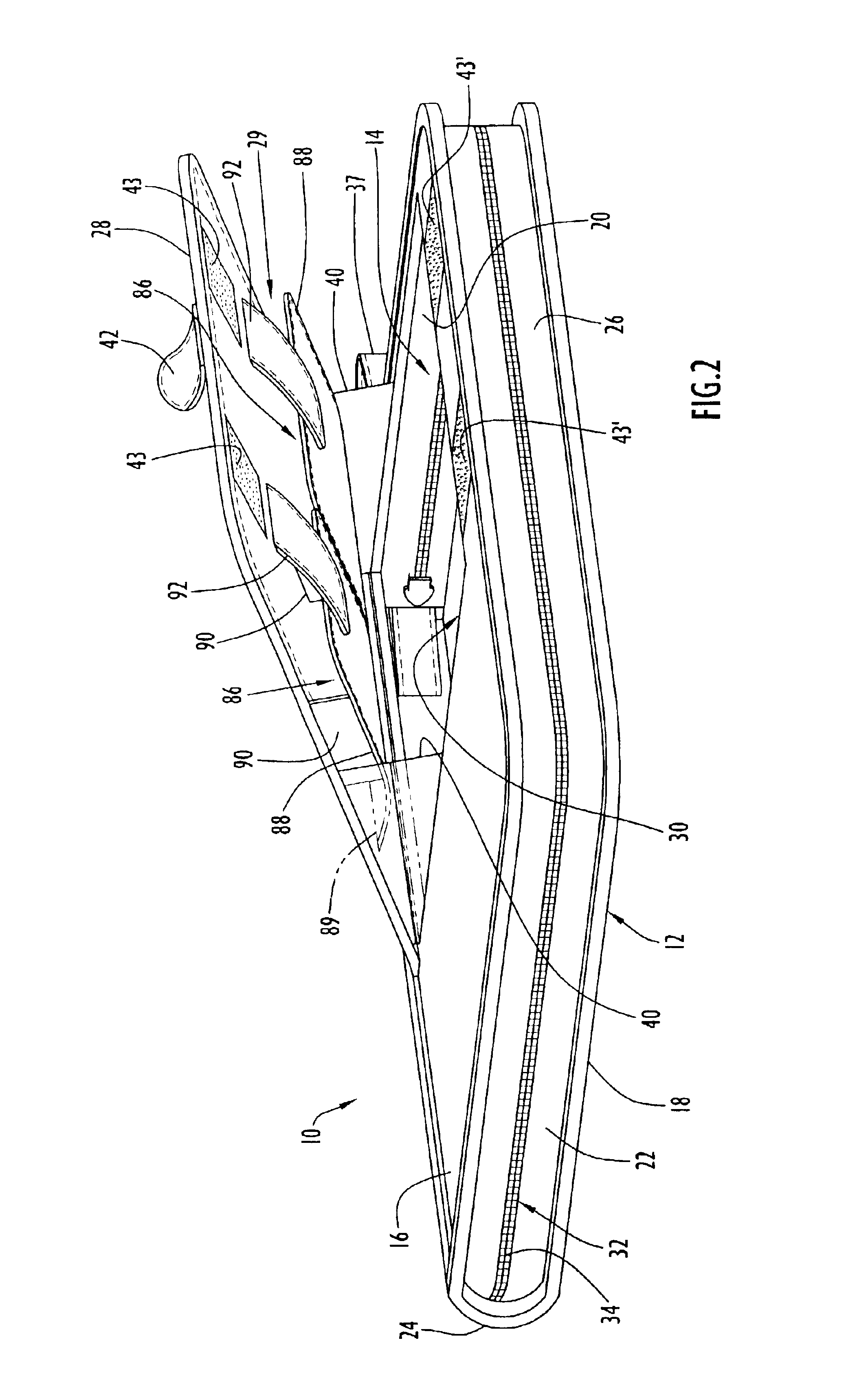It is often inconvenient for a user to remove a frequently accessed object from and / or to place a frequently accessed object in an interior compartment of conventional carrying cases via the compartment opening.
For example, the closure of the compartment opening may be relatively difficult or inconvenient to operate; a frequently accessed object in the interior compartment may be difficult to access via the compartment opening due to its location in the interior compartment and / or the presence of other objects in the interior compartment; the carrying case may assume a considerably larger profile in an open position with the compartment opening open than in a closed position with the compartment opening closed so as to require considerable surrounding space to access the interior compartment via the compartment opening; and / or the carrying case may need to be supported or placed on a
support surface in the open position.
The external pockets are ordinarily not in communication with an interior compartment of the carrying cases such that frequently accessed objects in the external pockets cannot also be removed through the interior compartment when the corresponding compartment opening is open.
In addition, frequently accessed objects may inadvertently fall out of the external pockets and be lost and / or damaged, especially when the carrying cases are dropped, tipped over, toppled or turned upside down.
The pockets afford little structural protection for the objects against damage due to shocks and other impacts, even while the external location of the pockets places the objects therein at
increased risk of damage from impacts.
A further
disadvantage associated with carrying cases having external pockets is that the objects within the pockets are usually at least partially visible from exteriorly of the carrying cases.
Where the objects are perceived to be valuable, as may be the case for many electronic devices, the objects are at
increased risk of theft, especially since the objects are usually quickly and easily removable from the pockets.
Exposure of the objects from the external pockets, the external location of the external pockets and / or the minimal protection provided by the external pockets place the objects at greater risk of damage from external conditions such as heat, cold, fluids and chemicals to which the carrying case may be exposed.
Since the objects cannot be removed from and placed in the external pockets via an interior compartment when the corresponding compartment opening is open, versatility, convenience and ease of use are greatly limited.
When the compartment opening is opened, however, the cellular phone cannot be removed from and placed in the interior compartment through the compartment opening.
Also, the cellular phone is free to move within the casing as the casing is pivoted out of and into the carrying bag, thereby subjecting the cellular phone to potential damage.
A phone disposed in the secondary interior compartment may be removed from and placed in the carrying case by opening the secondary cover section independently of the primary cover section but the phone is not also removable from the carrying case via the primary interior compartment when only the primary cover section is open.
Unless the external compartment is intended to hold objects, it represents wasted space that undesirably adds to the cost of materials and fabrication for the carrying case.
Where the external compartment is used to contain objects, however, the objects in the compartment are not separated in any way from the phone and may undesirably contact the phone with resulting damage to the phone and / or the objects.
In addition, objects in the external compartment may obstruct the opening in the cover and may need to be displaced within or removed from the external compartment to permit access to the phone.
In order to remove the phone from and place the phone in the interior, the user must manually insert a hand through the opening in a cumbersome series of movements.
 Login to View More
Login to View More  Login to View More
Login to View More 


